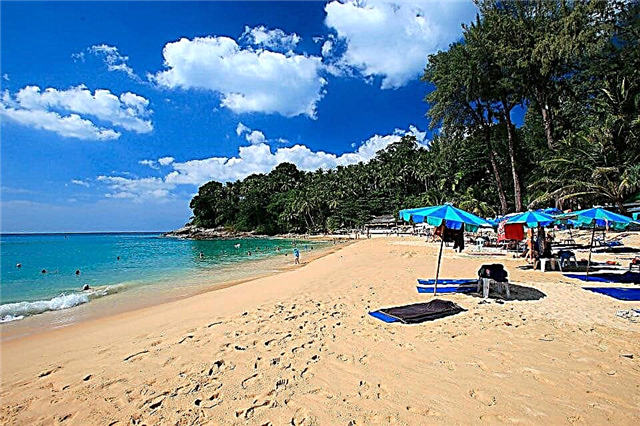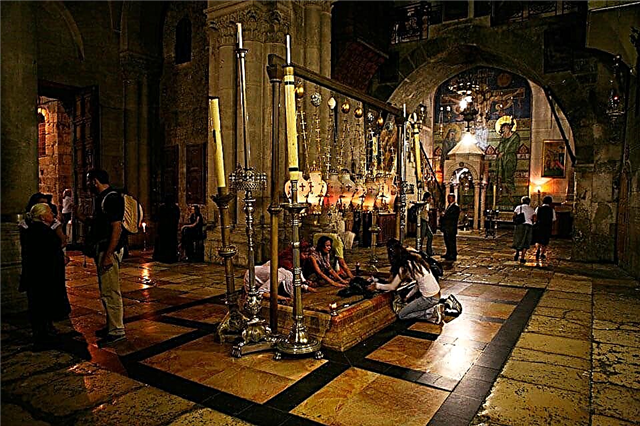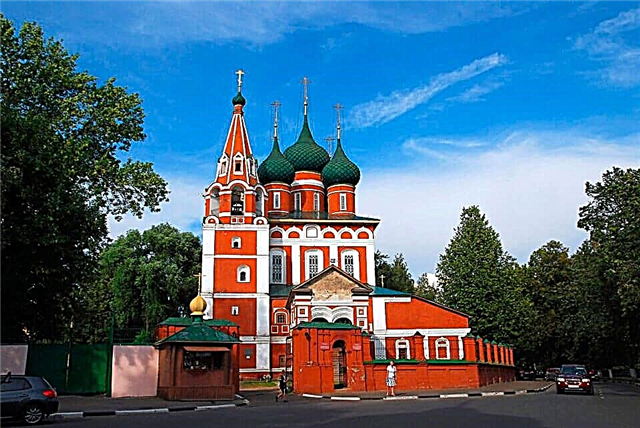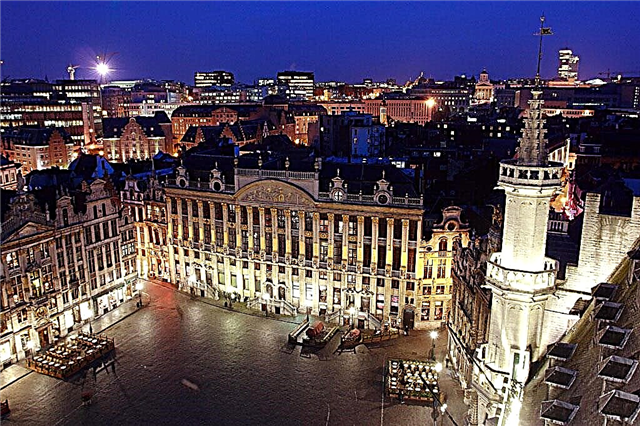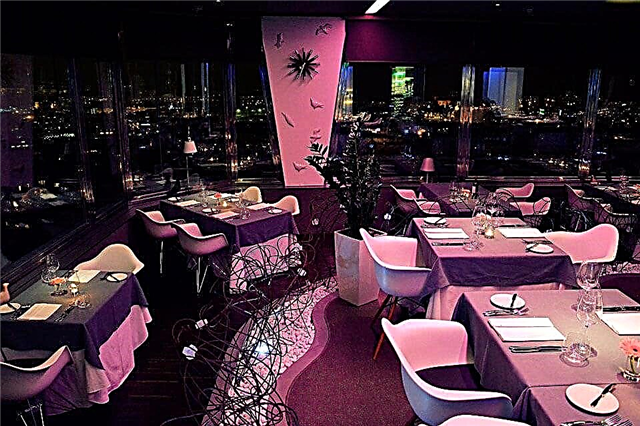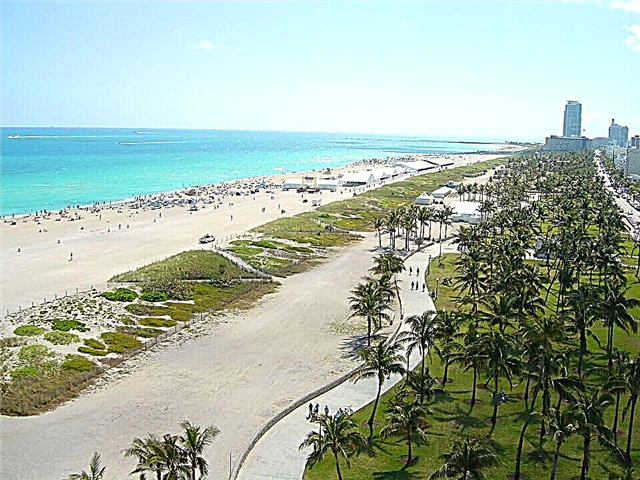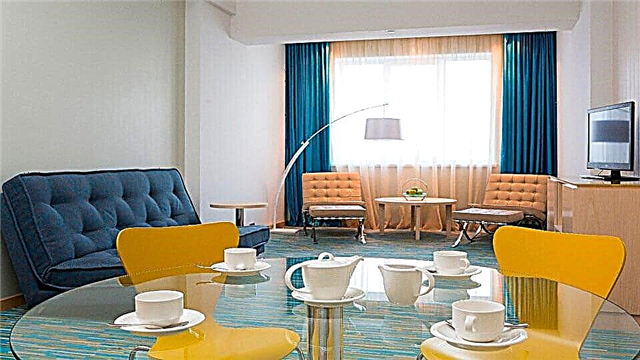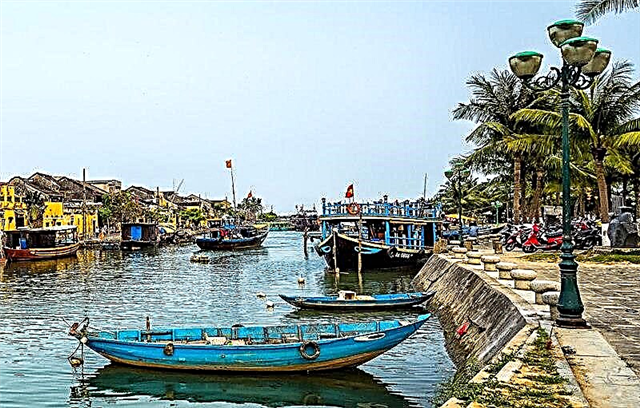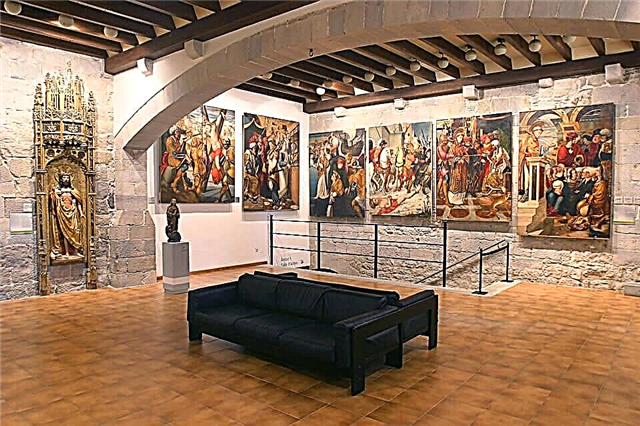Girona, striking in architecture of the Romanesque and Gothic periods, is romantic and majestic. Nowadays, the standard of living here is one of the highest in Spain. It is better for tourists to set aside at least a few days to get to know each other. A leisurely walk along the pavements, looking at frescoes on colorful houses of an unusual shape will bring great pleasure. A visit to a cozy cafe on a quiet street will help you feel the atmosphere. And after that, the historical heritage of the city will open to travelers in all its charm. So let's find out about the most interesting sights of Girona.
Fortress wall

Most of the sights are located in the old town. The powerful fortress wall that surrounds it is itself an architectural monument. These fortifications were built over ten centuries ago and have withstood many battles. Immersed in the greenery of the gardens, from its top you can clearly see the maze of the most beautiful passages between the buildings, along which the heroes of a large number of legends who were born here walked. Looking closely at the buildings, you can find decorations that are inconspicuous at first glance. Heraldic coats of arms with images of bats, mythical women-birds and men with lion faces, sculptures of couples in love.
Each such piece of jewelry has a history of creation associated with some interesting event. This is especially noticeable in the Jewish quarter. Here, every stone seems to whisper about amazing events from life. The originality of this place is fascinating, considering that it has been preserved almost in its original form since the ninth century.
Rambla de la Libertat

The heart of the city is the Rambla de la Libertat. For more than two hundred years, traders from all over the area have been flocking here. Craftsmen and farmers sell hand-made goods. In this market you can buy any thing you need on the farm, or a souvenir. Restaurants and eateries located on this street are distinguished by their comfort and characteristic color, inherent only in Girona. Street musicians and dancers cheer up and entertain residents and visitors alike. In the twilight, sometimes it is not clear where the sad song comes from. In a strange language, frightening and bewitching, sometimes loud, sometimes completely quiet…. It is sung by the ghost of Tolrana, an unhappy woman with a tragic fate.
Cathedral
The Cathedral deserves special honor. Inside, it evokes a sense of awe, peace and delight, a spacious room with diagonal arches, monumental columns, filled with light, enchants with the sounds of the organ and the splendor of decoration. The temple began to be erected in 1312, was built in 1416, and over the centuries, additions and changes were made, famous masters participated in the work on it. Each of them left their contribution to the great creation.
In the 17th century, a "ladder of repentance" appeared on the west side. It has ninety steps, and, according to legend, before entering the church, one is required to atone for one's sins, one at each step. From the outside, the cathedral is no less magnificent than from the inside. Even the smallest details in the design testify to the skill of its creators. One of its unforgettable features will attract fans of mysticism. A wonderful human-shaped gutter sticks right out of the wall. They say that it was the heavenly forces who turned into him one person who lived nearby, who loved to use foul language and throw stones at the building. Now only rainwater can pour out of her mouth.
In summer, the cathedral can be visited from 10:00 to 19:30, and in other seasons from 10:00 to 17:30. The ticket price is 5-7 euros, and on religious holidays and Sundays, you can get on the tour for free.
Arab Baths

The Romanesque Arabic baths got their name from the decorative Arabian-style decoration. The building was constantly destroyed during the siege of Girona by French soldiers, therefore, starting from the 13th century, various architects were taken over for restoration work. The last one who had a hand in the restoration of the baths in 1929 was the Catalan master Rafael Maso. The huge complex consists of 5 rooms with hot and cold baths, a steam room, a changing room and a room for warming up the body with dry air.
The octagonal basin with bulky columns and stone benches fully adopted the eastern influence of architecture when the Pyrenees were invaded by the Arab tribes. Despite the functioning steam rooms, the baths are presented as a museum building and are not used for their intended purpose. If the excursion group gathers more than 30 people, then a tour of the Arab baths will cost 1 euro, for the rest - 2 euro. On weekends and holidays, the attraction can be viewed from 10:00 to 14:00, and on weekdays from 10:00 to 19:00.
Benedictine monastery of Saint Peter Galligans

Considered a vivid example of the 12th century Romanesque style of Catalonia, despite the fact that the facade of the building has been greatly "updated". Since 1857 it has been a state building, and now it houses the Archaeological Museum. The octagonal dome of the Church of São Nicolau from the 12th century also contains many secrets associated with ancient burials. For connoisseurs of fine arts, it will be interesting to visit the city Museum of Art. The exhibition, created between the 10th and 20th centuries, is kept in the epic Episcopal Palace, near the Cathedral. The Salvador Dali Museum, which he himself designed, is dedicated to his life and work. The most shocking works of the eminent surrealist artist are collected in it.
Sculpture "Lioness of Girona"

The sculpture "Lioness of Girona" is a statue of a lion climbing a column at the northern gate of Girona. Initially, the legend told about a she-wolf, which one of the villagers taught to give signals to the guards at the walls of the fortresses about the approaching trade carts and other unexpected "guests". After her death, the grateful people decided to erect a monument to her, but the image of a simple she-wolf for the transmission of legends to subsequent generations seemed to people not very heroic and it was decided to replace it with a more frightening one - a lioness.
Since there were no such predators in these areas and, accordingly, no one saw a representative of the cat family, at the exit the sculpture of the animal turned out to be very peculiar. This attraction is also associated with one curious tradition that has been going on since the 13th century, when merchants, who did not have time to get into the city before the gate closed, climbed the pillar and stroked the animal's buttocks. Such a gesture made it clear to the guards that the late travelers belonged to their people. Today, a ladder has been set up for this purpose, and judging by the rubbing on the lioness's body, tourists repeat this custom on a regular basis.
El Kall Jewish Quarter

El Kall Jewish Quarter will suit fans of medieval architecture, which has remained intact since the 15th century. The opportunity to admire the untouched decoration of squares and lanes, tourists "owe" to King Ferdinand and Queen Isabella, who evicted wealthy Jewish settlements from here for refusing to accept Catholicism. The once flourishing area was now inhabited by Spanish Christians who did not have the money to develop it. The Museum of Jewish History of Catalonia on Carrer de la Forca, which consists of 11 rooms, will tell about the life and oppression of the Jewish community.
The ticket price is 2.4 euros, depending on the age category of visitors, and the opening hours are from 10:00 to 19:00 on weekdays, and on Sunday from 10:00 to 14:30 (Monday is a day off).Ancient staircases, narrow corridors of streets, 12th century Arab baths, exhibition halls and cafes are worth spending a day or more on them, so you should not forget about comfortable shoes for a tour of El Calle.
Bishop's palace
The episcopal palace once belonged to a local count, after which it was bought out by priests and, since the 13th century, has been constantly changing, incorporating features of the Romanesque style, the Gothic, and in some places the Renaissance. Until the 20th century, the building was completed with towers in which prisoners were held, and this is confirmed by the inscriptions made by prisoners on the walls of the Prison Hall, chapels and exhibition halls, for which the bishops specially allocated territory for storing rare works of art - paintings by famous artists, jewelry and church utensils.
On Monday, the museum is closed, but on other days from 10:00 to 18:00 (on Sundays from 10:00 to 14:00), the palace opens its doors to tourists. The ticket price for students, pensioners and tourist groups from 20 people is 3.5 euros, for the rest - 4.5 euros.
Monastery of St. Dominic

The Monastery of St. Dominic is a striking example of the Catalan Gothic style, built in the 13th century by a monk of the Dominican Order. In addition to the fact that this style of architecture itself does not differ in rich decoration of forms, this Catholic brotherhood did not have enough money to decorate the monastery. Despite this, the building looks very unusual due to its asceticism, expressed in a small number of windows and the simplicity of its structures against the backdrop of colorful Spanish buildings with decorative elements from different eras. Now the University of Arts is located here and access to prying eyes is closed, nevertheless, no one will forbid to admire from the outside.
Old hospital of St. Katherine

Old hospital of St. Catherine from the 13th century served as a leper colony for the poor, after which it was moved to the city center. Girona needed new territories to strengthen the city's borders and from the 17th century the hospital became one of the best hospitals in all of Spain under the auspices of the church and continued its existence until the 19th century, when the monks, having no more funds for its maintenance, handed the building over to the government.
Now the authorities of Catalonia sit in the hospital, but some attractions are available for tourists - this is the "Patio of Magnolias", the courtyard with exits from the hospital wards, and the pharmacy of St. Katerina, which has survived unchanged to this day. You can visit the hospital on weekends from 10:00 to 14:00 and on national holidays, the ticket price will cost 3.5 euros.
Church of St. Felix

The Church of St. Felix is a symbol of Girona, namely its spire, destroyed by lightning in the 16th century, which the authorities did not intentionally restore, taking it for a sign of God. One of the oldest buildings in this city, dates back to the 4th century, the construction of which was dedicated to two saints who died at the hands of the Roman pagans. One of the martyrs was called Felix, and his power survived and is still kept in the temple. The church also houses ancient Roman sarcophagi dating back to the 3rd century, for example, San Narsis.
The inhabitants of Girona believe that with his help they managed to repel the siege of the city in 1285 - insects got out of the saint's grave and drove away the French army. Many visitors are attracted here by the sculpture of the Reclining Christ for worship, made in 1350. Every century, the basilica underwent changes right up to the 17th century, combining elements of the Baroque and Gothic style, which you can enjoy every day from 10:00 to 17:30 for a price of 5 (seniors and students) to 7 euros.
Houses along the Onyar River

The houses along the Onyar River offer not only a picturesque view of the river, but are also an old landmark in themselves. "Suspended houses" began to be otrashivayutsya back in the 17th century from the fragments of the walls, which once served as a defense of the city from the attacks of French troops, and now they divide Girona into the "old" and "new" city. The multi-colored facades of the buildings are reflected in the river and create such a beautiful landscape that the masters have often depicted it in paintings, and tourists, in search of a good shot, are almost never translated in these places. It will not be possible to walk along the embankment, since it simply does not exist - three-storey buildings literally hang over the river, but walking along the multiple bridges thrown from one part of the city to another is easy.
Film Museum

The Cinema Museum opened in 1998 in Girona, attracting crowds of fans of cinematographic art who want to trace the history of its development over the past few centuries. Most of the valuable exhibits are from the collections of Thomas Mallol, which he collected for about 30 years, ranging from prints and the first cartoons, ending with old projectors and modern cinema lenses. To arrange the entire heritage of cinema for 400 years, which is about 30 thousand copies, the museum needed 4 floors, divided into thematic zones.
Children will be especially curious to learn, from the educational program offered here, how cartoons were created. You can immerse yourself in the world of cinema every day from 10:00 to 18:00 except Sundays and holidays, when the museum is open from 10:00 to 14:00. Tickets can be purchased for between 3 and 6 euros, depending on special offers and the age of the visitors.
Agullana Palace

Agullan's palace is shrouded in mystical legends about the vampire owners who lived in the castle from the 14th to the 17th century. The building hides many secret rooms, which is further evidence of the dark past of the inhabitants of this building. The baroque style of architecture gives the palace an even more frightening look and for thrill-seekers this attraction should be one of the first points on the list to visit, and if you walk up the stairs past the archway, you can find yourself at the walls of the Catholic monastery - San Martí Sacosta. Near this medieval complex, you can often meet artists with easels, depicting the "symbol" of the city on paper. The pleasant bonuses of these places include their free inspection.
Tower of Gironella
The Tower of Gironella is the only evidence of the 1809 pogroms by Bonaparte to Spain and other European states during the Napoleonic Wars. But this defensive structure appeared during the period of the Roman Empire, when its goal was to protect the trade route from Seville to Rome. Everyone can climb the spiral staircase that has survived to this day and enjoy the breathtaking panorama of the city.
Constitution Square
Constitution Square is a 4-minute walk from the Onyar River in the new part of town. The place is remarkable for its impressive size and sculptures by contemporary artists, especially the bronze statue of a girl born on the day of the adoption of the Spanish Constitution.
Gustave Eiffel bridge
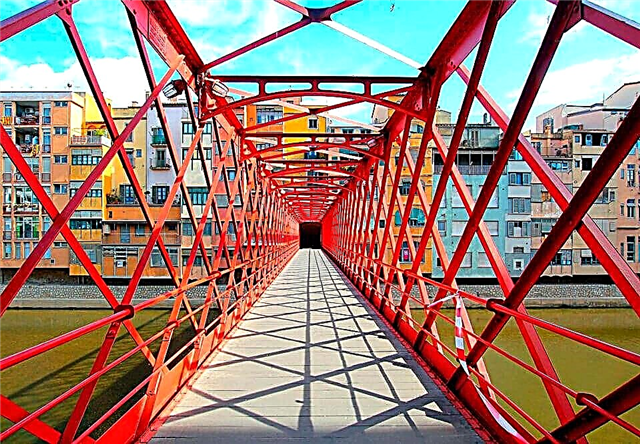
Several bridges over the Onyar River connect the new buildings to the old quarters. One of them, "Red Iron" (1877), deserves special attention. The Gustave Eiffel Bridge is interesting for its construction of intertwined metal rods of red color, which rather connect not 2 banks of the river, but 2 houses on both sides. This design belongs to the hand of the famous French engineer Gustave Eiffel, who became famous after the construction of the famous tower in Paris. For 1876, this creation was considered a real miracle. The old houses on the coast look magical, especially at sunset, when they play with shades of colors under the constantly changing rays of the hiding sun.
Parc de la Devesa

Parque de la Devesa with an area of 40 hectares is filled with decorative fifty-meter-high plane trees, palms and flowers, which the territory is so densely populated that in hot weather you can really hide from the sun. A moat is dug along the perimeter of the park, filled with water, so you can only enter through the gate.The green complex of de la Devesa includes a banana grove and a botanical garden, and there are many attractions and playgrounds for children.
Museum of art

The Museum of Art is the result of the merger of two museums dedicated to the cultural heritage of Girona from the 16th to the late 20th centuries. According to official documents, the museum began its work in 1976, but the first mention of it is associated with Count Borrell in the 10th century, who owned this building. More than 8 thousand church-historical exhibits are presented to the attention of tourists, which are distributed in 18 rooms in chronological order.
These are paintings by medieval Spanish artists, a 17th century typewriter, stained glass tables, jewelry, earthenware, ceramic and glassware, sculptures and even embroidery from the 15th century. The entrance to the museum will cost 3-4 euros, and it works every day from 10:00 to 18:00, and on weekends from 10:00 to 14:00.

